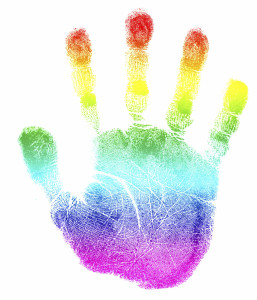Meditation Hand Positions and Mudras
 A surprisingly common question from people regarding meditation is “what should I do with my hands?” Funny enough, this is very much a cliche with public speaking and performing too.
A surprisingly common question from people regarding meditation is “what should I do with my hands?” Funny enough, this is very much a cliche with public speaking and performing too.
There is actually an ancient and significant practice involving the hand positions and meditation, the various positions called Mudras. First we will explore a bit of the Mudras, and then talk about general hand positions for those simply looking for a more comfortable position to try during meditation.
As sites and organs of sensory reception and action, our hands have a very close connection to our brains, mainly through neural activity. This simply means that the manner in which we hold our hands can have an impact on how we hold our minds. When pressure is applied to certain parts of the hand, the corresponding regions in the brain get “activated”.
Mudra
Mudra is a Sanskrit term meaning mark, seal or gesture. Mudra is the technique used to position your hands while meditating (pranayama), so as to direct the flow of energy in the body. There are different types of mudra, and each has a special result and purpose. This article discusses the different types of mudra, most of which were part of the tradition of the ancient Hindu and Buddhist cultures. Despite the fact that there were developed centuries ago, their meaning is still very clear and applicable today. This article also gives the different types of postures you can assume while performing mudra:
Gyan Mudra
Description: Your index finger and your thumb touch slightly at the tips. The other three fingers ought to be held out gently, but not ridged. The Gyan Mudra is one of the most commonly used forms of mudra. You will notice that in many of his depictions, Buddha assumes this position.
Significance: the gyan mudra is also referred to as the “seal of knowledge. The index finger symbolizes individual human realization, while the thumb symbolizes fire and divine nature. Hence, when the two fingers come together, it is meant to signify and encourage Expansion and Wisdom.
Another variation of this form of mudra can be done by lowering your index finger onto your thumb’s knuckle crease. This variation is believed to produce more protective and active energy.
Benefits: Gyan mudra can be effective in increasing alertness, easing drowsiness and inspiring creativity.
Shuni Mudra
Description: Your middle finger and thumb touch slightly at the tips. The other three fingers out to be held out gently, but should not be ridged.
Significance: Another name for shuni mudra is the “seal of patience”. The middle finger symbolizes courage to hold responsibility and duty. The thumb symbolizes divine nature and power. Thus, when the two fingers come together, it is intended to signify Discernment, Focus, Discipline and Patience.
Benefits: It can help to instill patience and spirit to execute one’s responsibilities. In addition, it helps the mind to focus on noble thoughts, and transform negative thoughts into positive ones.
Prithvi Mudra or Surya Ravi
Your ring finger and the thumb touch slightly at the tips. Gently hold out the other three fingers, but do not ridge them.
Significance: The Prithvi Mudra is also referred to as the “seal of the sun” or the “seal of life”. The ring finger symbolizes energy strength and the earth. The thumb symbolizes divine nature and power. Therefore, when these two fingers come together, it signifies and encourages vitality, health, energy and balance.
Benefits: It can help to energize the body, encourage positivity and intuition and facilitate a positive transformation in your life. Moreover, it can be helpful in the reconstruction and invigoration of tissues in the body.
Varun Mudra or Buddhi Mudra
The little finger and the thumb touch slightly at the tips. Again, hold out your other three fingers, but do not ridge them.
Significance: The Varun Mudra is also referred to as the “seal of mental clarity”. The little finger symbolizes communication and water, while the thumb divine nature and fire. When they come together, it is intended signify and enhance fluid communication and openness.
Benefits: It helps to enhance effective and clear communication. Furthermore, it can be effective in balancing the water proportions in the body, and this helps to activate your salivary glands, moisten dry eyes and hydrate dry skin.

Meditation Hand Positions
Generally, there are four common postures used during meditation. These are highlighted below:
The Cross Legged Posture: Sit on a flat surface and cross your legs. Ensure that your spinal cord is straight so as to boost the circulation of spiritual energy.
Seated Posture: This is done by seating on a chair or stool while bare feet. Your back should be straight and your thighs parallel to the ground where the chair/stool is placed. Rest your arms comfortably on the arm chair or on your knees.
Kneeling Posture: Kneel on the floor, with your buttocks resting on your heels and toes. Rest your hands on your thighs.
Corpse Posture: This posture is not commonly used in meditation as it may easily induce sleep. However, this posture can be effective in stress reduction. To perform it, lay on your back on a flat surface. Ensure that your legs straight and relaxed.
Conclusion
The use of mudras has been proven to be quite effective in the transformation of lives. It not only helps in the cultivation of a still mind, but also helps to expand and refine your awareness. Once your mind is focused and quiet, it paves way for the flow of universal consciousness.
If you are interested in exploring the Mudras more, here are some of the most highly rated books on Amazon. Please feel free to leave a comment and let me know if there are any particularly good resources.
